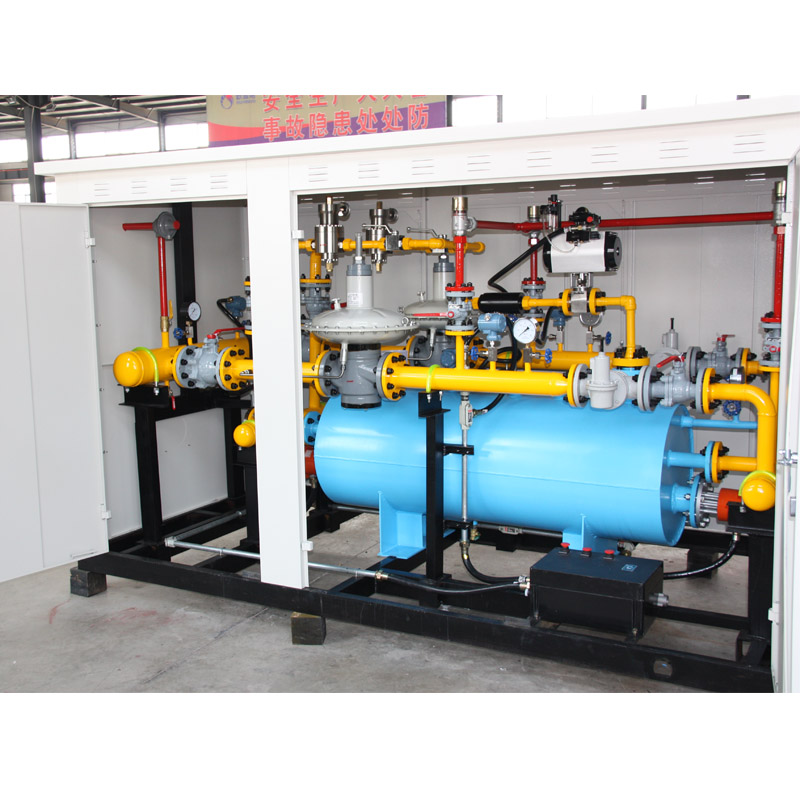
Oct . 02, 2024 00:45
Back to list
Natural Gas Distribution Station Operations and Efficiency Improvements
The Role of Natural Gas Distribution Stations
Natural gas has rapidly become one of the most significant energy sources worldwide, transitioning from a luxury fuel to a necessity for residential, commercial, and industrial users. Central to this shift are natural gas distribution stations, which play an essential role in the supply chain by ensuring that gas is efficiently and safely delivered from production sites to end users.
What is a Natural Gas Distribution Station?
A natural gas distribution station is a facility where natural gas is received from transmission pipelines, which transport the gas over long distances from production areas. These stations regulate, pressurize, and distribute the gas into smaller pipelines that deliver it directly to homes and businesses. The primary functions of these stations include pressure reduction, odorization, measurement, and sometimes storage of natural gas.
The Functionality of Distribution Stations
One of the roles of a distribution station is to decrease the high pressure at which natural gas travels through transmission pipelines. Typically, natural gas is transported at high pressures of about 1,000 PSI (pounds per square inch). Upon reaching a distribution station, this pressure must be reduced to a level that is safe for consumer use, usually around 1/4 PSI.
.
The Importance of Safety Measures
محطة توزيع الغاز الطبيعي

Safety is of the utmost importance in the operation of natural gas distribution stations. These facilities are equipped with advanced monitoring systems that constantly check for leaks, pressure anomalies, and equipment malfunctions. Operators are trained to respond to emergencies, including valve shut-offs and evacuation protocols. Regular maintenance and inspections are also critical to ensure that all equipment remains in optimal condition.
Environmental Impact
The increasing reliance on natural gas is often considered a positive shift from more polluting fossil fuels, such as coal and oil. Natural gas burns cleaner than these alternatives, producing significantly lower amounts of carbon dioxide and pollutants. However, the environmental impacts associated with extraction and distribution, such as methane leaks, have prompted discussions about sustainability and the need to reduce our overall reliance on fossil fuels.
Future Trends in Natural Gas Distribution
With advancements in technology and a growing emphasis on energy efficiency, the future of natural gas distribution stations looks promising. Innovations such as smart grid technology and advanced metering infrastructure allow for better monitoring of consumption patterns, enabling utilities to optimize their distribution networks.
Moreover, as the world focuses on reducing greenhouse gas emissions, the integration of renewable energy sources with natural gas appears to be a viable solution. Natural gas can act as a bridge fuel, assisting in the transition towards a more sustainable energy mix. For instance, it can support intermittently generated renewable energy sources like wind and solar by providing backup power when these sources are not producing energy.
Conclusion
Natural gas distribution stations are crucial components of the energy infrastructure that enable the efficient delivery of natural gas to consumers. They not only facilitate safe and reliable supply but also play a significant role in the ongoing transition toward cleaner energy sources. As technology continues to advance and the demand for cleaner energy rises, these stations will evolve, ensuring that natural gas remains a central part of the global energy landscape.
Latest news
-
Safety Valve Spring-Loaded Design Overpressure ProtectionNewsJul.25,2025
-
Precision Voltage Regulator AC5 Accuracy Grade PerformanceNewsJul.25,2025
-
Natural Gas Pressure Regulating Skid Industrial Pipeline ApplicationsNewsJul.25,2025
-
Natural Gas Filter Stainless Steel Mesh Element DesignNewsJul.25,2025
-
Gas Pressure Regulator Valve Direct-Acting Spring-Loaded DesignNewsJul.25,2025
-
Decompression Equipment Multi-Stage Heat Exchange System DesignNewsJul.25,2025

